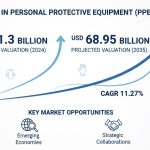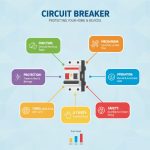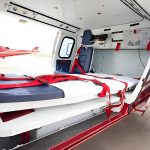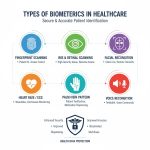Breast Cancer Diagnostics Market: A Comprehensive Analysis of Global Trends and Future Opportunities
The global breast cancer diagnostics market stands at a pivotal juncture in healthcare evolution, representing both tremendous opportunity and critical necessity in the fight against one of the world’s most prevalent cancers. According to analysts at Vantage Market Research, the market achieved a valuation of USD 19.43 billion in 2024 and is poised for remarkable expansion, with projections indicating it will reach USD 45.83 billion by 2035. This impressive trajectory reflects a compound annual growth rate of 8.10% between 2025 and 2035, driven by a confluence of factors including the escalating incidence of breast cancer worldwide and the proliferation of private diagnostic centers equipped with cutting-edge technology.
The market’s robust growth narrative is underpinned by increasing governmental and healthcare provider recommendations emphasizing early cancer screening, which has become a cornerstone of modern preventive medicine. While opportunities abound, the industry faces notable challenges, particularly the adoption of refurbished diagnostic imaging systems driven by cost constraints in resource-limited settings. The consumables segment emerges as the fastest-growing category, while in-vitro diagnostic testing technology maintains the largest market share. Hospital settings dominate as end-users, reflecting their central role in comprehensive cancer care delivery. North America continues to lead regional markets, supported by advanced healthcare infrastructure and high awareness levels. The competitive landscape features prominent players including GE Healthcare, Roche Diagnostics, and Becton, Dickinson and Company, who are actively shaping the market through strategic partnerships and technological innovations aimed at improving patient outcomes and expanding access to sophisticated diagnostic technologies.
Get a Sample Copy:- https://www.vantagemarketresearch.com/breast-cancer-diagnostics-market-2523/request-sample
Key Takeaways:
- Market Valuation & Growth: Global breast cancer diagnostics market valued at $19.43 billion in 2024, projected to reach $45.83 billion by 2035 with a CAGR of 8.10%.
- Primary Growth Drivers: Increasing breast cancer incidence globally (2.3 million women diagnosed in 2020), rising awareness campaigns, and expanding government screening initiatives.
- Technology Advancement: AI integration in imaging interpretation achieving 94% sensitivity, emergence of liquid biopsy tests, and development of ultra-sensitive ctDNA detection methods.
- Dominant Segments: Imaging holds 51.98% market share, instrument-based products command 71.41% share, and diagnostic & predictive applications lead with 48.69% share.
- Regional Leadership: North America dominates with 46.60% market share, while Asia Pacific shows fastest growth potential driven by healthcare reforms and rising incidence.
- Reimbursement Expansion: Growing insurance coverage including Medicare covering 80% of mammogram costs and Belgium’s expanded MammaPrint reimbursement for neoadjuvant settings.
- Key Market Players: Hologic, Inc., Siemens Healthineers AG, GE Healthcare, Roche Diagnostics, and BD leading through innovation and strategic partnerships.
- Emerging Trends: Blood-based tests like BREASTEST plus showing 90% sensitivity, platform-based products experiencing highest growth rate, and medical labs segment showing strongest CAGR.
- Market Challenges: High diagnostic costs creating accessibility barriers, false-positive results leading to overdiagnosis, and adoption of refurbished equipment due to budget constraints.
- Post-COVID Recovery: Market regained momentum after pandemic disruptions, with hospitals resuming screening programs and diagnostic services returning to pre-pandemic levels.
Breast Cancer Diagnostics Market Insights
The breast cancer diagnostics industry finds itself propelled by the alarming and persistent increase in breast cancer incidence globally. The American Cancer Society’s Breast Cancer Facts & Figures 2024 underscores this reality, revealing that breast cancer maintained its position as the most diagnosed cancer among women in the United States. The statistics paint a sobering picture: in 2024, medical professionals expected to diagnose approximately 310,720 new cases of invasive breast cancer, alongside 55,720 cases of ductal carcinoma in situ, representing a significant healthcare burden that continues to challenge medical systems worldwide.
The factors contributing to this escalating incidence form a complex web of demographic, lifestyle, and environmental influences. As global populations experience increased longevity, more women reach age brackets where breast cancer risk peaks substantially. Contemporary lifestyle factors including rising obesity rates, increasingly sedentary behaviors, hormonal therapy usage, and the trend toward delayed childbearing have all been scientifically linked to elevated breast cancer risk. Furthermore, enhanced awareness campaigns and improved screening programs have paradoxically contributed to increased reported cases, as more cancers are detected at earlier, more treatable stages. This multifaceted scenario creates an expanding demand for sophisticated and accurate diagnostic technologies that can meet the growing need for early detection and precise characterization of breast tumors.
While mammography continues to serve as the gold standard for breast cancer screening, the field has witnessed remarkable technological advancement. Digital breast tomosynthesis, contrast-enhanced mammography, advanced ultrasound techniques, magnetic resonance imaging, and molecular diagnostic tests have revolutionized the diagnostic landscape. The integration of artificial intelligence into imaging interpretation represents a particularly transformative development, enhancing accuracy while significantly reducing both false positive and false negative results. Additionally, the emergence of liquid biopsy and biomarker-based diagnostics has introduced non-invasive tools that promise to reshape how clinicians detect breast cancer and monitor treatment response, offering new hope for improved patient outcomes.
Healthcare systems across the globe have responded to this rising burden with increased investments in comprehensive breast cancer screening programs. Governments and private healthcare providers have expanded diagnostic service accessibility, particularly focusing on developing regions where screening rates have historically lagged. The emphasis on early detection combined with personalized medicine approaches has accelerated adoption of next-generation sequencing, genetic testing, and companion diagnostics, creating a more nuanced and individualized approach to breast cancer care.
The landscape of breast cancer diagnostics has been further transformed by expanding reimbursement and insurance coverage for testing procedures. Various national health authorities, including the German Federal Joint Committee, have approved numerous tests for nationwide reimbursement, significantly improving patient access. In the United States, comprehensive coverage through Medicaid, Medicare, and third-party payers for genetic testing including BRCA1 and BRCA2 analysis has resulted in increased procedure volumes globally. Medicare Part B’s coverage of 80% of mammogram screening costs for women aged 40 and older exemplifies the commitment to making preventive care accessible.
Recent developments continue to shape the reimbursement landscape. In February 2025, Agendia, Inc. announced a significant expansion of reimbursement criteria by Belgium’s National Institute for Sickness and Invalidity Insurance for MammaPrint, now including coverage for neoadjuvant settings. This decision, effective January 1, 2025, provides full reimbursement for patients with HR+/HER2-negative early-stage breast cancer, enabling genomic testing on core needle biopsies to guide treatment decisions. Professor Martine Piccart of the Université Libre de Bruxelles emphasized the transformative nature of this advancement, noting that MammaPrint’s application to core needle biopsy specimens represents a major milestone in personalized breast cancer treatment, potentially leading to less extensive surgical procedures when appropriate treatments are selected.
The FLEX study has demonstrated MammaPrint’s robust performance in neoadjuvant settings, showing high concordance between matched surgical resection samples and core needle biopsy specimens. This expanded indication reinforces the critical role of genomic testing in contemporary breast cancer management, supporting more precise treatment strategies that can dramatically improve patient outcomes while potentially reducing treatment burden.
Company Market Share
The breast cancer diagnostics market features a dynamic competitive landscape where established industry leaders and innovative newcomers vie for market position through technological advancement and strategic positioning. Key players including Siemens Healthineers AG, Kheiron Medical Technologies, Bio-Rad Laboratories, and Hologic, Inc. command significant market revenue and continuously work to strengthen their presence through carefully orchestrated strategies encompassing partnerships, acquisitions, and relentless innovation.
These companies recognize that success in this rapidly evolving market requires more than maintaining status quo; it demands continuous expansion of product portfolios and integration of cutting-edge technologies. By doing so, they aim to meet the growing demand for sophisticated breast diagnostic technologies while providing deeper market insights that can guide future development. Their efforts reflect a broader industry trend toward comprehensive solutions that address the entire diagnostic journey, from initial screening through treatment monitoring.
Hologic, Inc. has emerged as a particularly noteworthy player in the breast cancer diagnostics arena, establishing itself as a leader in medical technology with a specialized focus on women’s health. The company’s reputation rests on innovative products that push the boundaries of diagnostic capability, exemplified by the Hologic Genius AI Detection solution. This sophisticated platform revolutionizes image analysis by searching every slice of tomosynthesis image sets to identify lesions potentially indicative of breast cancer. With an impressive sensitivity rate of 94%, the system highlights suspicious areas at radiologists’ workstations, facilitating more intelligent and precise interpretation that can significantly improve diagnostic accuracy while potentially reducing reading time and physician fatigue.
Top 10 Key Players
- BD
- Koninklijke Philips N.V.
- Thermo Fisher Scientific Inc.
- Genomic Health (Exact Sciences Corporation)
- QIAGEN
- Danaher
- Hologic Inc.
- Myriad Genetics Inc.
- F. Hoffmann-La Roche Ltd.
- Argon Medical Devices
Cancer Diagnostics Market Dynamics
The breast cancer diagnostics market operates within a complex ecosystem of drivers, challenges, and opportunities that collectively shape its trajectory. At the forefront of market drivers stands the relentless increase in breast cancer prevalence globally, a trend that shows no signs of abating. World Health Organization data from 2021 reveals the staggering scope of this challenge: 2.3 million women received breast cancer diagnoses globally in 2020. Perhaps even more striking, by the end of 2020, 7.8 million women who had been diagnosed with breast cancer in the previous five years remained alive, establishing breast cancer as the world’s most prevalent cancer and underscoring the massive ongoing need for diagnostic and monitoring services.
This escalating prevalence translates directly into increased demand for breast cancer diagnostics, creating a powerful growth engine for the market throughout the forecast period of 2024-2030. The relationship between disease prevalence and diagnostic demand is further amplified by improving survival rates, which mean more women require ongoing monitoring and surveillance, creating sustained demand for diagnostic services beyond initial detection.
Government initiatives represent another crucial market driver, with national health authorities worldwide implementing programs to increase awareness about early screening and diagnosis. The World Health Organization’s Global Breast Cancer Initiative, launched in March 2021, exemplifies this commitment. The initiative’s ambitious goal to reduce global breast cancer mortality by 2.5% annually would prevent 25% of breast cancer deaths by 2030 and 40% by 2040 among women under 70 years of age. By disseminating information about signs, symptoms, early detection methods, and treatment options, such initiatives raise public awareness about breast cancer diagnosis and treatment, directly stimulating demand for diagnostic services.
However, the market faces significant headwinds that temper its growth potential. The high cost of breast cancer diagnosis creates accessibility barriers, particularly in developing nations and among underserved populations. Additionally, diagnostic limitations such as false-positive results and overdiagnosis with mammography can lead to unnecessary treatments, potentially eroding patient and physician confidence in screening programs. These challenges underscore the need for continued technological advancement to improve both accuracy and cost-effectiveness.
The COVID-19 pandemic introduced unprecedented disruption to the breast cancer diagnostics market, with hospital admissions for cancer patients deprioritized relative to coronavirus cases. Strict lockdown regulations, staff shortages, and scarcity of personal protective equipment significantly impacted breast cancer patient admissions. However, as vaccination efforts progressed and healthcare activities resumed, the market demonstrated resilience, regaining momentum and positioning itself for continued growth during the forecast period.
Breast Cancer Diagnostics Market Segment Analysis
The Vantage market research report provides comprehensive analysis of companies engaged in providing consumables and instruments for cancer diagnostics across diverse segments. This detailed examination forecasts revenue growth at country levels while analyzing the latest industry trends in each sub-segment from 2021 to 2035. The segmentation analysis reveals nuanced market dynamics that inform strategic decision-making for industry participants and healthcare policymakers alike.
Type Insights
- Imaging
- Biopsy
- Genomic Tests
- Blood Tests
- Others
The imaging segment emerged as the dominant force in the market, commanding an impressive 51.98% revenue share in 2024. This dominance reflects the widespread adoption of imaging techniques including mammography, ultrasound, and magnetic resonance imaging, which have become indispensable tools in breast cancer diagnosis. The segment’s strength is further bolstered by advanced technologies such as molecular breast imaging, computed tomography, 3D breast tomosynthesis, and positron emission tomography, which demonstrate tremendous potential for transforming breast imaging capabilities and improving diagnostic accuracy.
The Centers for Disease Control and Prevention’s September 2024 report highlighting breast cancer as the second most prevalent cancer type and second leading cause of death among U.S. women underscores the critical importance of effective imaging solutions. Industry innovation continues apace, as evidenced by Barco’s October 2024 unveiling of the Coronis OneLook display solution. This advanced display, optimized for interpreting 3D cine examinations from CT, ultrasound, and breast MRI, incorporates patented RapidFrame technology ensuring crisp moving images without blur. The addition of customizable on-screen touch buttons enhances workflow efficiency for radiologists, while the accompanying ConnectCare service provides healthcare organizations with weekly monitoring and automated compliance reporting capabilities.
Despite imaging’s current dominance, the blood tests segment anticipates remarkable growth, driven by extensive research initiatives from both academic institutions and industry leaders. The effectiveness of liquid biopsy tests particularly contributes to expanding adoption of blood-based diagnostics. BCAL Diagnostics Limited’s March 2025 launch of BREASTEST plus exemplifies this trend. This innovative blood test, designed to complement standard imaging methods, addresses the challenge of detecting lesions in high-density breast tissue. Clinical studies demonstrated impressive performance metrics with 90% sensitivity and 85.5% specificity, outperforming many existing screening methods. Simultaneously, Personalis Inc., in collaboration with The Institute of Cancer Research and The Royal Marsden NHS Foundation Trust, highlighted the importance of ultra-sensitive ctDNA detection for early-stage breast cancer recurrence using their NeXT Personal assay. This personalized liquid biopsy test detects minimal amounts of circulating tumor DNA with exceptional sensitivity down to approximately one part per million, enabling unprecedented precision in monitoring cancer recurrence.
Product Insights
- Platform-based Products
- Next-generation Sequencing
- Microarrays
- PCR
- Others
- Instrument-based Products (72.5%)
- Imaging
- Biopsy
The instrument-based products segment demonstrated market leadership with a commanding 71.41% revenue share in 2024. This dominance stems from the high precision and accuracy these products offer in detecting and diagnosing breast cancer. Equipped with advanced imaging technologies and molecular analysis tools, these instruments provide detailed, reliable information about tumor presence, location, and characteristics—crucial factors for guiding treatment decisions and ensuring optimal patient outcomes. Mammography machines exemplify the segment’s importance, serving as the cornerstone of routine screening programs due to their proven ability to detect tumors at early, highly treatable stages.
Conversely, the platform-based products segment anticipates the highest compound annual growth rate during the forecast period. These products offer comprehensive solutions integrating multiple diagnostic modalities and technologies within unified systems, streamlining workflows and generating time and cost savings for healthcare providers. The availability of approved products including Ion GeneStudio S5 next-generation sequencing systems, Ion AmpliSeq HD panels, and GeneReader NGS system for targeted NGS and QIAseq Panel assays drives segment growth by offering healthcare providers sophisticated, integrated diagnostic capabilities.
Application Insights
- Screening
- Diagnostic and Predictive
- Prognostic
- Research
The diagnostic and predictive segment secured market dominance with a 48.69% revenue share in 2024. This segment’s strength reflects the crucial role diagnostic applications play in identifying breast cancer presence at early stages, enabling timely intervention that leads to improved treatment outcomes and reduced mortality rates. Diagnostic methods including mammography, ultrasound, and MRI help detect breast tissue abnormalities, guiding healthcare providers toward accurate diagnoses. Recent advancements, such as the liquid biopsy test highlighted in a January 2023 study utilizing circulating tumor DNA for early-stage breast cancer detection with high accuracy, demonstrate the segment’s continued evolution.
The prognostic segment anticipates the highest compound annual growth rate during the forecast period, reflecting intensifying competition among numerous players serving the same patient base. The increasing importance of prognostic tests in matching patients with appropriate therapies has significantly improved survival rates. Companion diagnostics such as BRAC Analysis CDx by Myriad Genetic Laboratories, PD-L1 IHC 22C3 pharmDx by Dako North America, and Foundation One CDx by Foundation Medicine play crucial roles in this therapeutic matching process. Exact Sciences’ presentation of novel long-term patient results in multi-cancer early detection and breast cancer recurrence testing at the American Society of Clinical Oncology 2023 meeting reinforced confidence in the prognostic value of diagnostic tools. The analysis of the SEER program data reaffirmed the continued confidence in Oncotype DX Breast Recurrence Score’s prognostic value, highlighting the test’s capability for predicting breast cancer-specific mortality in patients with both invasive ductal carcinoma and invasive lobular breast cancer.
End Use Insights
- Hospitals & Clinics
- Diagnostic Centers and Medical Laboratories
- Others
The hospitals and clinics segment demonstrates steady growth at 6.92%, driven by rising hospitalization rates and the increasing breast cancer burden. These healthcare facilities serve critical roles in conducting biopsy procedures following initial screening tests, while leveraging advanced imaging technologies including PET, CT, and MRI for effective disease monitoring and treatment evaluation. The multidisciplinary teams typical of hospital settings—encompassing oncologists, radiologists, pathologists, surgeons, and nurses—collaborate to provide comprehensive care ensuring patients receive appropriate diagnostic evaluations, treatment planning, and ongoing management.
The medical labs and diagnostics centers segment anticipates the highest compound annual growth rate, attributable to high market penetration and substantial procedure volumes. Government initiatives providing reimbursement for diagnostic tests significantly boost market growth in this segment. Healthcare institutions increasingly partner with laboratories to integrate various tests including mammography, ultrasound, and MRI, creating comprehensive diagnostic ecosystems. The January 2025 inauguration of Laredo Medical Center’s Women’s Imaging Center exemplifies this trend, addressing the challenge that only 40% of women receive mammograms due to scheduling backlogs or limited accessibility. The new center offers advanced diagnostic services including breast ultrasounds, biopsies, and bone densitometry, significantly expanding access to crucial diagnostic services.
Regional Insights
- North America
- Europe
- Asia Pacific
- Latin America
- Middle East & Africa
North America maintained its position as the dominant force in the breast cancer diagnostics market, accounting for an impressive 46.60% revenue share. This leadership position stems from the increasing prevalence of breast cancer combined with robust government initiatives aimed at improving screening and diagnostic rates. The American Cancer Society’s data reveals breast cancer’s continued prominence as the most prevalent cancer among U.S. women (excluding skin cancers), accounting for nearly 30% of all new female cancer cases annually. The 2025 projections of 316,950 new invasive breast cancer cases and 59,080 DCIS cases, with an expected 42,170 deaths, underscore the urgent need for advanced diagnostic solutions. This increasing incidence fuels demand for sophisticated diagnostic technologies including mammography, genetic testing, and AI-powered imaging, while rising awareness, government initiatives, and expanding insurance coverage stimulate screening program adoption and innovative diagnostics deployment across North America.
U.S.
The United States commands the largest market share within North America’s breast cancer diagnostics market, driven by escalating breast cancer prevalence and intensifying government initiatives targeting enhanced screening and diagnostic rates. The January 2024 award of a $2.4 million Department of Defense grant to Weill Cornell Medicine for validating the Syantra DX Breast Cancer test exemplifies the nation’s commitment to diagnostic innovation. This blood-based diagnostic tool employing artificial intelligence for early-stage breast cancer detection represents a potential paradigm shift in screening, particularly benefiting high-risk women, those with dense breast tissue, and underserved populations by offering a non-invasive alternative to traditional mammography. The Syantra DX test’s potential to revolutionize breast cancer screening by increasing accessibility—especially for women with dense breast tissue and those in remote areas—could lead to earlier detection, reduced need for aggressive treatments, improved survival rates, and a market shift toward liquid biopsy solutions.
Europe
Europe commands considerable revenue share in the breast cancer diagnostics market, supported by developed economies including Germany, Spain, the United Kingdom, France, and Italy. The region’s market growth is driven by increasing breast cancer prevalence and rapid technological advancement, addressing breast cancer’s position as the leading cause of death among European women.
The United Kingdom’s breast cancer diagnostics market represented 14.31% of Europe’s total market in 2024. Key growth factors include rising breast cancer prevalence, technological advancements, and developing healthcare infrastructure. The June 2024 breakthrough by researchers from The Institute of Cancer Research, London, developing an ultra-sensitive blood test using whole genome sequencing to detect circulating tumor DNA in high-risk breast cancer patients, exemplifies the region’s innovative capacity. This test’s ability to predict cancer recurrence months or years before relapse significantly improves early detection and post-treatment monitoring, potentially driving UK market growth by increasing demand for advanced liquid biopsy technologies and enhancing precision medicine approaches.
Germany’s market growth is propelled by technological advancements in breast imaging and substantial organizational investments in screening initiatives. The University of Lübeck reports approximately 78,000 new breast cancer cases annually in Germany, establishing it as the most common cancer among women. Government support proves crucial, with Germany’s Mammography Screening Program, established in 2005, offering free biennial mammograms for women aged 50-75 under public health insurance. This program screens over 3 million women annually, achieving early detection rates that have contributed to a 25% reduction in breast cancer mortality.
Asia Pacific
Asia Pacific emerges as the fastest-growing regional market, driven by comprehensive healthcare reforms, rising breast cancer incidence, significant research and development investments, and advances in breast imaging technologies. The region’s rapidly expanding population further amplifies market growth potential.
China’s breast cancer diagnostics market experiences robust growth fueled by increasing disease prevalence, technological advancements, and organizational investments in screening campaigns. GLOBOCAN data reveals China’s significant health challenge, with 357,161 new breast cancer cases reported in 2022, positioning it among countries with the highest case numbers globally. Projections indicate this figure will reach 481,000 cases by 2040. As incidence rises, demand for breast cancer diagnostics in Chinese hospitals is expected to grow substantially, supported by expanding awareness and access to screening services now reaching more women across the nation.
Japan’s market anticipates rapid growth driven by imaging technology advancements and diverse organizational investments in screening campaigns. As one of Asia’s most technologically advanced nations, Japan faces unique challenges with GLOBOCAN 2022 estimates reporting 91,916 new breast cancer cases among women, with an age-standardized incidence rate of 74.4 per 100,000 women. The need to develop advanced screening techniques for women aged 40-49 with higher breast density has spurred adoption of newer digital breast cancer diagnosis systems featuring improved resolution and imaging capabilities.
Latin America
Latin America’s breast cancer diagnostics market has demonstrated significant growth driven by increased regional disease prevalence. Government and nonprofit organization surveys reveal that overall cancer mortality in Latin America approaches twice that of high-income countries. Pan American Health Organization data identifies breast cancer as the most common cancer form and leading cancer-related mortality cause among women in the Americas. Latin America and the Caribbean reported over 210,000 new breast cancer cases in 2020, resulting in nearly 68,000 deaths, factors expected to sustain market growth throughout the forecast period.
Brazil, Latin America’s most populous nation, faces particular challenges with breast cancer representing the leading cancer form affecting Brazilian women and the second leading cause of female mortality. National Cancer Institute estimates project approximately 73,610 new cases annually from 2023 to 2025. While breast cancer cannot be entirely prevented, early detection remains crucial for favorable prognosis and treatment success. However, high mortality rates indicate that access to early diagnosis and treatment remains challenging, highlighting the urgent need for improvements ensuring more women receive timely, effective care.
Middle East & Africa
The Middle East and Africa region, encompassing South Africa, Saudi Arabia, and other Middle Eastern and North African countries, experiences market growth driven primarily by rising breast cancer prevalence among women. The growing need for improved healthcare infrastructure and high disease burden drive demand for breast cancer diagnostics. South Africa diagnosed 71,860.6 breast cancer cases in 2022. Recent years have seen countries including the UAE, Morocco, and South Africa implement organized cancer screening programs, with government-industry collaborations to supply diagnostic tests expected to boost market growth.
Key market players including BD, Danaher, Koninklijke Philips N.V., QIAGEN, and Thermo Fisher Scientific, Inc. actively shape the regional landscape. The September 2022 joint development of an AI-powered early breast cancer screening program by the Saudi Ministry of Health and Saudi Data and Artificial Intelligence Authority exemplifies regional innovation. Additionally, the October 2022 introduction of one of the Middle East’s first oncology e-platforms at Seha Virtual Hospital’s headquarters by the Kingdom’s Ministry of Health and Saudi Telecom Company promises to assist medical professionals in early cancer diagnosis, driving market growth throughout the forecast period.
The breast cancer diagnostics market stands at an inflection point, poised for transformative growth driven by technological innovation, expanding access, and increasing global awareness of the critical importance of early detection in improving patient outcomes and saving lives.
Frequently Asked Questions (FAQs):
- What is the projected market size of the global breast cancer diagnostics market by 2035?
- Which diagnostic technology segment currently holds the largest market share in breast cancer diagnostics?
- What are the main factors driving the growth of the breast cancer diagnostics market?
- Which region dominates the breast cancer diagnostics market and what is its market share?
- What role is artificial intelligence playing in advancing breast cancer diagnostics?
- How are liquid biopsy and blood-based tests transforming breast cancer detection?
- What are the key challenges facing the breast cancer diagnostics market?
- Which end-use segment is experiencing the highest growth rate and why?
- How has reimbursement policy evolution impacted breast cancer diagnostics adoption?
- What are the emerging technologies expected to shape the future of breast cancer diagnostics?
![[Market Research Reports] – Research Google News Blog | VMR.Biz](https://www.vmr.biz/wp-content/uploads/2022/12/logo-removebg-preview.png)











